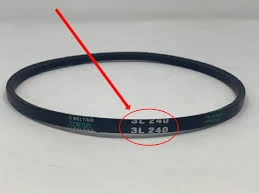- Arabic
- French
- Russian
- Spanish
- Portuguese
- Turkish
- Armenian
- English
- Albanian
- Amharic
- Azerbaijani
- Basque
- Belarusian
- Bengali
- Bosnian
- Bulgarian
- Catalan
- Cebuano
- Corsican
- Croatian
- Czech
- Danish
- Dutch
- Afrikaans
- Esperanto
- Estonian
- Finnish
- Frisian
- Galician
- Georgian
- German
- Greek
- Gujarati
- Haitian Creole
- hausa
- hawaiian
- Hebrew
- Hindi
- Miao
- Hungarian
- Icelandic
- igbo
- Indonesian
- irish
- Italian
- Japanese
- Javanese
- Kannada
- kazakh
- Khmer
- Rwandese
- Korean
- Kurdish
- Kyrgyz
- Lao
- Latin
- Latvian
- Lithuanian
- Luxembourgish
- Macedonian
- Malgashi
- Malay
- Malayalam
- Maltese
- Maori
- Marathi
- Mongolian
- Myanmar
- Nepali
- Norwegian
- Norwegian
- Occitan
- Pashto
- Persian
- Polish
- Punjabi
- Romanian
- Samoan
- Scottish Gaelic
- Serbian
- Sesotho
- Shona
- Sindhi
- Sinhala
- Slovak
- Slovenian
- Somali
- Sundanese
- Swahili
- Swedish
- Tagalog
- Tajik
- Tamil
- Tatar
- Telugu
- Thai
- Turkmen
- Ukrainian
- Urdu
- Uighur
- Uzbek
- Vietnamese
- Welsh
- Bantu
- Yiddish
- Yoruba
- Zulu
Nov . 07, 2024 13:49 Back to list
Choosing the Right Timing Belt for Your Vehicle Maintenance Needs
Understanding Timing Belts A Crucial Component in Cars
When it comes to the intricate workings of a car’s engine, one component that often goes unnoticed but plays a vital role is the timing belt. Typically made from a durable rubber material, the timing belt is an essential part of the engine's functioning, responsible for synchronizing the rotation of the crankshaft and camshaft. This synchronization ensures that the engine’s valves open and close at the appropriate times during each cylinder's intake and exhaust strokes, optimizing the engine's performance and efficiency.
Importance of the Timing Belt
The timing belt is integral to a vehicle’s operation. Without it, the engine would not function correctly, leading to severe performance issues. If the timing belt snaps or becomes misaligned, it can result in catastrophic engine damage, including bent valves, damaged pistons, or even a complete engine failure. Understanding the importance of the timing belt is crucial for car owners; it is often a component that requires periodic inspection and timely replacement to prevent costly repairs.
Signs of Wear and Tear
Several warning signs indicate that your timing belt may need replacing. These include unusual noises coming from the engine area, such as ticking or grinding sounds, which may suggest that the belt is worn or loose. Another sign is the appearance of oil leaks near the front of the motor, as this could indicate that the timing belt cover is damaged. Additionally, if your car exhibits rough idling or a lack of power when accelerating, it may be a sign that the timing belt is failing.
timing belt for cars

Replacement Intervals
Timing belts are not designed to last indefinitely. Manufacturers typically recommend replacing the timing belt every 60,000 to 100,000 miles, but this can vary depending on the make and model of the vehicle. It's essential to consult the owner’s manual for specific guidelines related to your car. Regular maintenance and timely replacement can prevent the risks associated with a failing timing belt, ultimately saving time and money on extensive repairs.
DIY vs. Professional Replacement
Replacing a timing belt is a task that some DIY enthusiasts may consider, but it's crucial to understand that it can be a complex job. Many modern engines are designed with limited accessibility, making it challenging to replace the timing belt without proper tools and experience. Furthermore, incorrect installation can lead to significant engine issues. Therefore, while it may be tempting to save on labor costs by doing it yourself, consulting a professional mechanic is often the safest option to ensure the job is done correctly.
Conclusion
The timing belt may be a small component, but its importance in your vehicle’s engine cannot be overstated. Regular maintenance and timely replacement are key to avoiding potential engine damage and ensuring your car operates efficiently. By staying informed about the signs of wear and the recommended replacement intervals, you can protect your investment and enjoy a smoother, more reliable driving experience. Always remember, when in doubt, consult with a qualified mechanic to keep your timing belt—and your car—in optimal condition.
-
Korean Auto Parts Timing Belt 24312-37500 For Hyundai/Kia
NewsMar.07,2025
-
7PK2300 90916-T2024 RIBBED BELT POLY V BELT PK BELT
NewsMar.07,2025
-
Chinese Auto Belt Factory 310-2M-22 For BMW/Mercedes-Benz
NewsMar.07,2025
-
Chinese Auto Belt Factory 310-2M-22 For BMW/Mercedes-Benz
NewsMar.07,2025
-
90916-02660 PK Belt 6PK1680 For Toyota
NewsMar.07,2025
-
drive belt serpentine belt
NewsMar.07,2025

